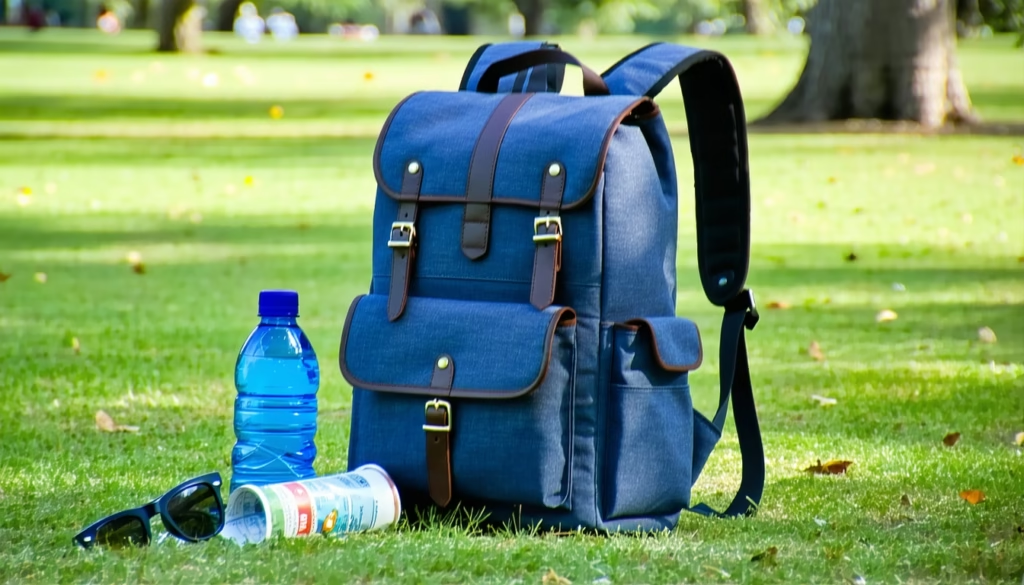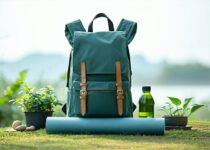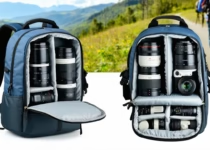Key Features To Look For In A Weekender Backpack For Short Road Trips

Picture this: we’re gearing up for a short road trip, and our trusty weekender backpack is the star of the show. It holds exactly what we need for two or three nights away without dragging us down the highway. But not all bags are created equal. We’ve crammed gear into backpacks with flimsy zippers, missing pockets, or straps that dig in after a few hours.
Remember the time we spilled coffee in our bag because it lacked a spill-proof pocket? Or when a sudden downpour soaked our gear because we skipped weather resistance? Those are rookie mistakes. That’s why we rounded up the top weekender backpack features to look for before you hit the road. In this guide, we’ll cover capacity, comfort, organization, durability, and more.
By the end, you’ll know exactly what to check when picking a short-trip companion. Let’s dive in and score the features that make a backpack the perfect road-trip buddy.
Assess Ideal Capacity
Ever crammed too much into a bag only to wish you’d left room for souvenirs? We’ve been there. Selecting a backpack with the right volume makes all the difference on a quick getaway.
Understand Volume Needs
Aim for 20 to 30 liters if you plan to pack for two to three nights. That range usually fits clothes, toiletries, and a few extras. Anything above 35 liters can feel bulky and tempting to overpack.
Keep Carry-On Friendly
Size matters when you want to skip checked baggage fees. A carry-on weekender that fits most overhead bins saves time at the airport. Double-check dimensions against your airline’s rules.
Pack With Cubes
Packing cubes help you stay organized and save space. Make sure your cubes slide neatly into the main compartment. Check our advice on using packing cubes in backpack to optimize your layout.
Compare Material Options
Wondering which fabric will stand up to road-trip wear and tear? Material choice affects weight, durability, and style, so we weigh the pros and cons.
Canvas Vs Leather Vs Nylon
Canvas feels rugged and breaks in nicely, while leather adds polish but demands upkeep. Nylon is lightweight and often water-resistant, making it a popular pick. For an in-depth look, see our canvas vs leather vs nylon backpack guide.
Look For Eco-Friendly Fabrics
Sustainable fabrics like recycled polyester and organic canvas lower your footprint. An eco-friendly weekender backpack can be just as sturdy as traditional options. Plus, you’ll feel good about your choice.
Prioritize Comfort And Support
Long drives and city walks call for a bag that won’t rub us the wrong way. Here’s how to keep strain at bay.
Shoulder Straps And Padding
Wide, padded straps distribute weight evenly across our shoulders. Look for adjustable straps that contour to your shape. A bit of mesh on the padding improves airflow, so you won’t end up soaked in sweat.
Sternum Straps And Hip Belts
Adding a sternum strap backpack or hip belt can shift weight off your shoulders. We especially appreciate sternum straps on bumpy paths. They help stabilize the load when you’re on the move.
Breathable Back Panels
A mesh-lined back panel reduces sweat buildup and increases airflow. Some designs feature channels that guide heat away from your body. We never underestimate how much difference a ventilated back makes.
Inspect Organization Features
Digging for chargers under clean laundry is nobody’s idea of a good time. The right pockets keep everything in its place.
Main Compartment Access
A wide, clamshell-style opening gives full access to the main compartment. Loading and unloading becomes a breeze. Check out our clamshell weekender backpack recommendations for top designs.
Dedicated Pockets
Built-in pockets for shoes, water bottles, and gadgets save precious time. A shoe compartment weekender prevents dirt transfer. Hidden pockets also guard valuables—see our tips on the hidden pocket backpack.
Quick-Grab Exterior Slots
Exterior pockets let you reach essentials like phone, sunglasses, or snacks without unpacking. We love stretchy mesh side pockets for water bottles and insulated sleeves for coffee tumblers.
Evaluate Durability And Build
Road trips test every seam and zipper. We want a bag that can take the knocks.
Stitching And Reinforced Seams
Double-stitched seams at stress points resist tearing. Look for bartack stitching where straps connect to the pack. It’s a small detail that adds big toughness.
Quality Hardware
Zippers, buckles, and hooks should feel solid and smooth. Metal-core zippers last longer than cheap plastic ones. Examine pull tabs for ease of use, even with gloves.
Reinforced Base
A reinforced or molded base keeps the bag upright and protects contents from rough surfaces. Hard-wearing fabric or a slip-in panel can extend the life of your pack.
Ensure Weather Resistance
What good is a backpack if it lets in rain at the drop of a hat? We want protection from drizzles to downpours.
Water-Repellent Coating
Look for durable water repellent (DWR) finishes that shed moisture. An interior liner adds another barrier. For heavy rain, check out a weather resistant weekender backpack.
Sealed Zippers
Laminated or taped zippers block water entry along the closure line. They keep gear dry without adding bulk. A rain flap over the zipper adds extra security.
Raincover Storage
Some packs include a built-in raincover in a bottom pocket. It’s a lifesaver when storms appear out of nowhere. We never leave for a trip without testing the stowaway cover.
Factor In Tech Integration
Charging on the go and protecting devices makes any trip smoother. Here’s what we look for.
USB Charging Port
An external USB port lets you juice up your phone without digging for a cable. Pair it with a power bank inside. Learn how to set it up in our weekender backpack charger guide.
Laptop And Tablet Sleeve
Padded sleeves for a laptop or tablet prevent scratches and bumps. Some designs accept up to 15-inch devices. Check our insights on tech in weekender backpack for models with extra protection.
Cable Management
Dedicated loops or channels inside the pack keep charging cords neat. No more tangled wires at the bottom of your bag. A clip-in keyring also keeps small tech accessories at hand.
Consider Expandable Design
Ever wished for just a little more room after souvenir shopping? Expandable backpacks have you covered.
Expandable Zippers
A zip-out gusset can add 5 to 10 liters of space in seconds. When you don’t need extra room, it stays sleek. See our picks for expandable weekender backpack models.
Modular Attachments
Look for daisy chains or loops that let you clip on pouches and water bottles. A modular system means you can customize your bag for each trip. We like small accessory pouches for chargers or toiletries.
Weigh Size And Weight
Every ounce counts when we’re carting our pack through airports or winding roads. Here’s how to stay light.
Seek Lightweight Materials
Ultralight fabrics and frame sheets cut bulk without sacrificing strength. Some packs weigh as little as 1.5 pounds empty. Browse options in our lightweight weekender backpack roundup.
Assess Structural Rigidity
A minimal frame or light plastic sheet helps the backpack hold its shape. That prevents sagging and rubbing against your back. Remember, too rigid can feel stiff, so find a balanced design.
Review Versatility In Use
A good weekender backpack should play many roles, from business trips to beach days.
Convertible Carry Styles
A convertible weekender backpack can switch between top-carry handles, shoulder straps, and briefcase mode. It’s ideal when you transition from road trip to office meeting.
Work-To-Weekend Transition
Look for sleek styling that works in a boardroom and on a trail. Our guide to a work to weekend backpack covers designs that fit both worlds.
Gym-Friendly Features
A weekender gym backpack often includes ventilated pockets for sweaty gear. That keeps gym clothes separate from your clean clothes and electronics.
Frequently Asked Questions
What Size Should a Weekender Backpack Be?
For short road trips, we recommend a bag between 20 and 30 liters. That size lets you pack essentials without bulk. If you lean toward minimalist packing, aim closer to 20 liters.
Are Weekender Backpacks Carry-On Compatible?
Many weekender backpacks meet carry-on size limits. Look for dimensions around 22 x 14 x 9 inches. Always verify with your airline’s specific rules before you fly.
How Much Should a Good Backpack Weigh?
Aim for an empty weight under 2 pounds, if possible. Ultralight models can be as light as 1.5 pounds. A lighter base means more room for gear without risking shoulder strain.
Is an Expandable Backpack Worth It?
If you frequently bring back souvenirs or need flexible space, expandable designs can be lifesavers. The extra 5 to 10 liters on tap prevent overstuffing while keeping the pack sleek when unexpanded.
Do I Need Waterproof Fabric?
Water-repellent coatings and sealed zippers handle most drizzles. For heavy rain, a fully waterproof backpack or built-in raincover is worth considering. Assess your typical weather conditions.
How Do I Clean a Weekender Backpack?
Shake out loose dirt and spot-clean with mild soap and water. Air dry the bag fully before storing. For deep cleans, see our cleaning weekender backpack tips.
Can I Use a Weekender Backpack as a Daily Bag?
Absolutely. Many designs transition seamlessly from weekend trips to daily commutes. Look for convertible styles with laptop sleeves and professional finishes.
Conclusion
Choosing the right pack boils down to balancing capacity, comfort, and durability. By checking off features like volume, weather resistance, and tech pockets, we ensure our gear stays safe and organized. Let us know which features made your list for the next getaway—drop a comment below or share this guide with fellow road-trip fans. We can’t wait to hear about your new travel companion.


